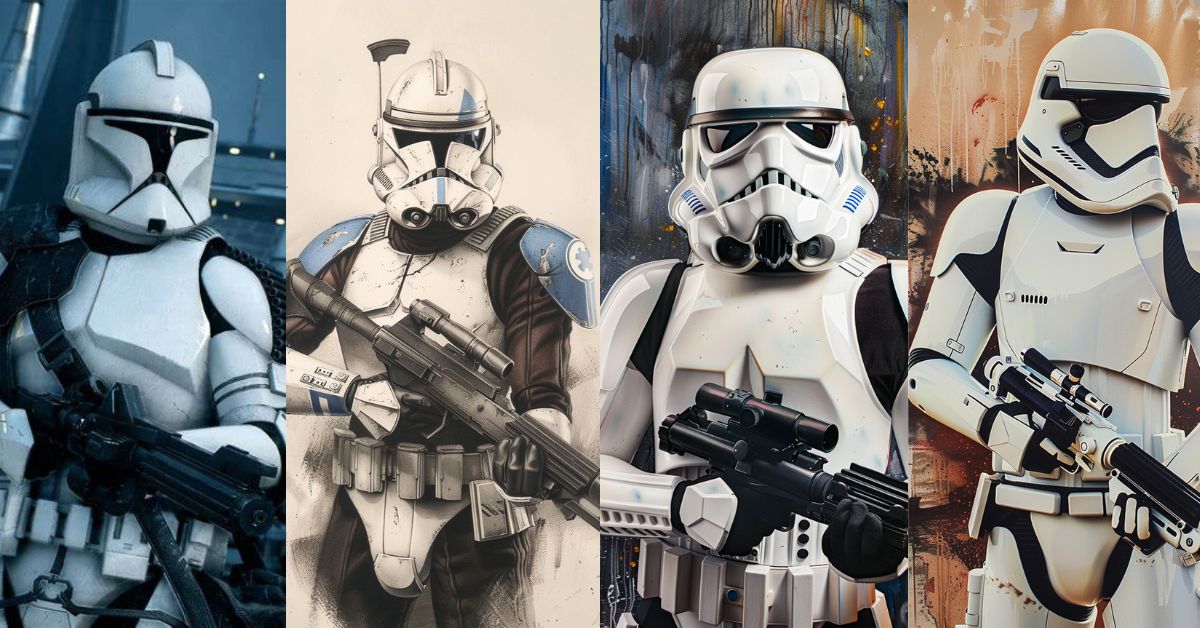In the expansive universe of Star Wars, one of the most iconic elements is the design of the troopers.
From the Phase 1 and Phase 2 Clone Troopers of the Galactic Republic to the Stormtroopers of the Galactic Empire and the First Order, each design is unique and carries its own set of advantages and disadvantages.
But which design is the best?
In this article, we will delve into the details of four different trooper designs, comparing their strengths and weaknesses to determine which design could be considered the best.
Let’s get started!
Clone Trooper Phase I Armor
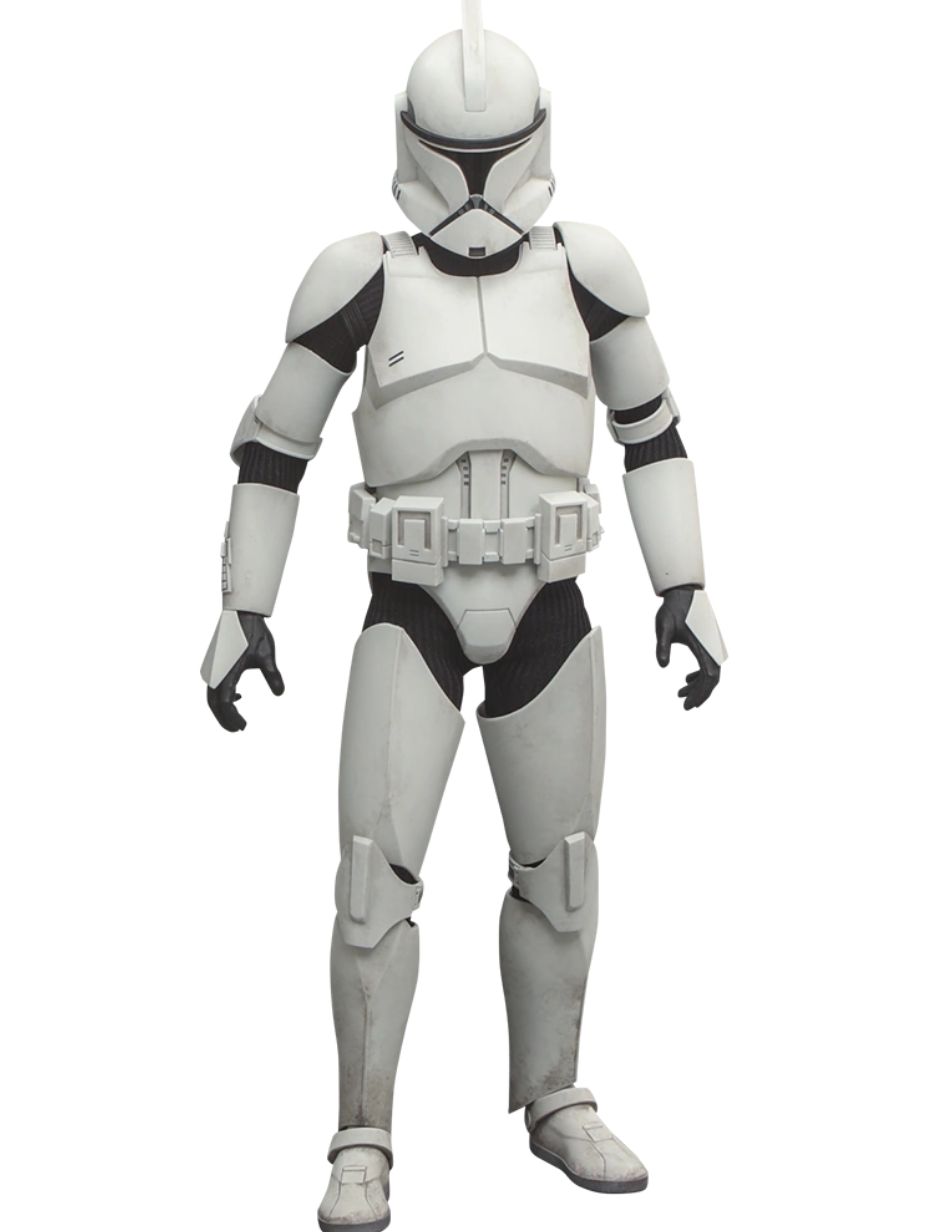
Credit: starwars.fandom.com
The Phase 1 Armor, first seen in “Star Wars: Episode II – Attack of the Clones,” is the initial version of the armor worn by the clone troopers of the Galactic Republic.
The design is robust and intimidating, with a T-shaped visor and a fin on the helmet. The armor is white, symbolizing unity and conformity within the ranks of the clone troopers.
Pros:
The Phase 1 Armor offers comprehensive body protection. It is designed to withstand impacts, energy blasts, and extreme temperatures, making it suitable for various combat situations.
The armor is also equipped with life-support systems for different environments, allowing clone troopers to operate in space, underwater, or on planets with harsh conditions.
The helmet includes integrated communication devices, enhancing coordination among the troops.
The helmet’s HUD (Heads-Up Display) provides real-time data, including battlefield maps, status reports, and targeting information, which aids in strategic planning and execution.
Cons:
Despite its advanced features, the Phase 1 Armor has its drawbacks. The design lacks mobility, making it difficult for the troopers to move swiftly during combat.
The armor is heavy and can be cumbersome, limiting the trooper’s agility and speed.
The armor also lacks comfort, which can affect the trooper’s endurance during prolonged battles.
The tight fit and rigid structure can cause discomfort, potentially distracting the trooper and affecting their performance.
Furthermore, the helmet’s T-shaped visor offers limited peripheral vision, which can be a disadvantage in combat situations where situational awareness is crucial.
Clone Trooper Phase II Armor
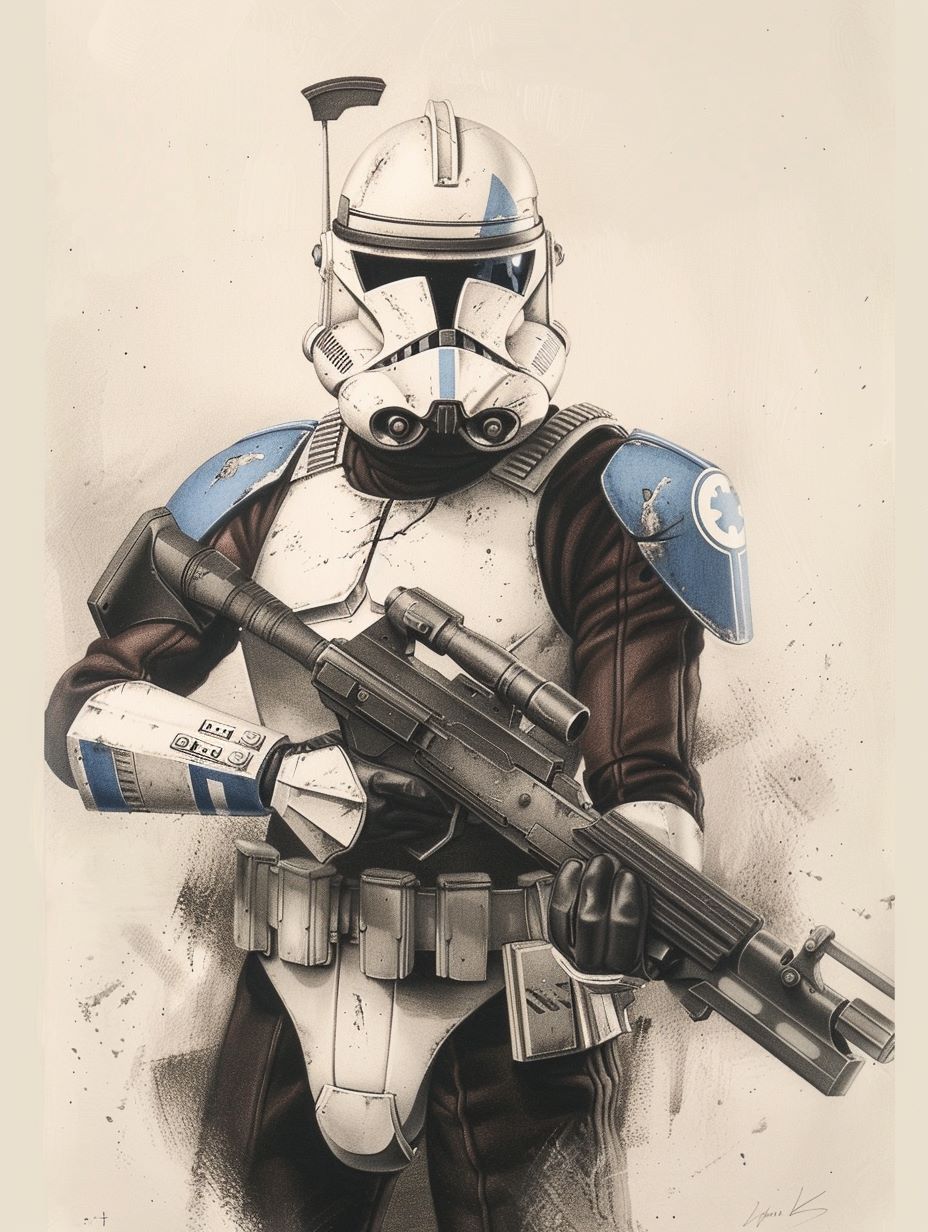
The Phase 2 Armor, introduced in “Star Wars: Episode III – Revenge of the Sith,” is an upgrade to the Phase 1 design.
This armor was designed to address the limitations of the Phase 1 Armor, providing clone troopers with improved protection, functionality, and mobility.
Pros:
The Phase 2 Armor provides enhanced protection, with a more robust design that offers better resistance to blaster fire and environmental hazards.
The helmet design was improved to provide better field vision, addressing one of the main drawbacks of the Phase 1 Armor.
The visor was widened, and the HUD was upgraded to provide more detailed battlefield data.
The armor was also redesigned for increased comfort and mobility. The weight was reduced, and the fit was adjusted to allow for greater movement, enabling the troopers to react more quickly in combat situations.
These improvements significantly enhanced the trooper’s performance on the battlefield.
Cons:
Despite these improvements, the Phase 2 Armor still has its limitations.
While the armor offers better protection than its predecessor, it is still vulnerable to direct hits from blaster fire.
The armor can withstand glancing hits, but a direct hit can penetrate the armor and injure the trooper.
Additionally, while the Phase 2 Armor offers improved mobility compared to the Phase 1 Armor, it still restricts movement to some extent.
The armor can be cumbersome in close-quarters combat, and the weight, although reduced, can still tire out a trooper during prolonged engagements.
Stormtrooper

The Stormtrooper design, iconic to the original Star Wars trilogy, is a significant departure from the clone trooper armor.
It features a sleek, white design that is both menacing and symbolic of the Galactic Empire’s power.
The armor is designed for intimidation, with its stark white color standing out on the battlefield and its faceless helmet adding to its menacing presence.
Pros:
The Stormtrooper armor offers improved mobility compared to the clone trooper armors.
The design is more streamlined, allowing for quicker movements and better agility in combat situations. This can give Stormtroopers an edge in certain combat scenarios where speed and agility are crucial.
The armor is also equipped with advanced communication systems.
Each helmet includes a built-in comlink, allowing Stormtroopers to communicate with each other and their command center during operations. This enhances coordination among the troops and allows for more effective execution of strategies.
Cons:
However, the Stormtrooper design has been criticized for its lack of precision in combat situations. This is often attributed to limited visibility through the helmet’s eye lenses.
The narrow eye slits can restrict the field of vision, making it difficult for Stormtroopers to accurately aim their weapons or spot enemies in their peripheral vision.
Additionally, while the armor provides some protection against blaster fire, it is not completely blaster-proof. Direct hits can still penetrate the armor and injure the wearer.
First Order Stormtrooper
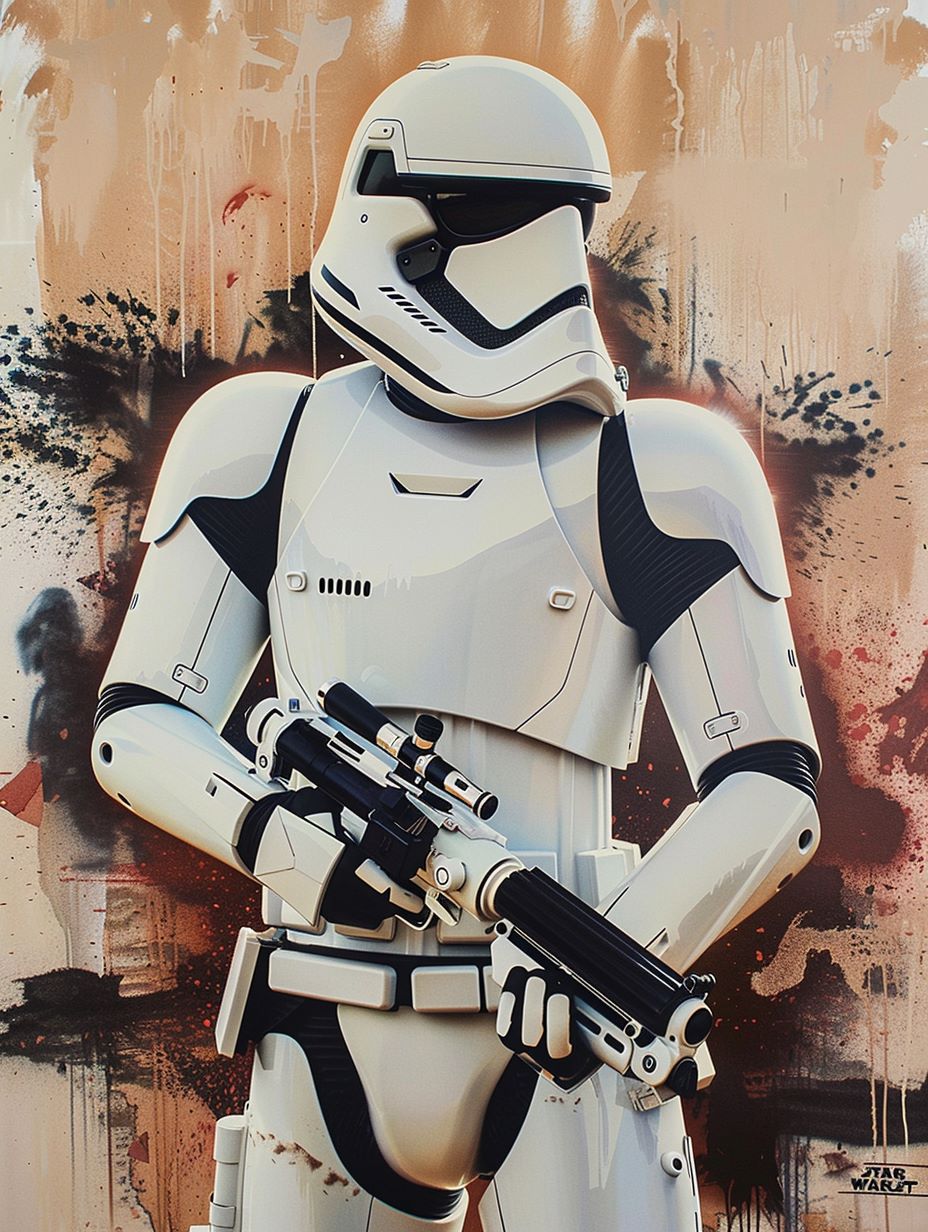
The First Order Stormtrooper, seen in the sequel trilogy, is a modern take on the classic Stormtrooper design.
It features a more streamlined look with improved armor and weaponry, reflecting the technological advancements of the First Order.
Pros:
The First Order Stormtrooper armor offers superior protection compared to previous designs. The armor is made from a plastoid composite that provides increased resistance to blaster fire and physical attacks.
The helmet is also upgraded with an integrated Heads-Up Display (HUD) that provides real-time battlefield data, enhancing the trooper’s situational awareness.
The First Order Stormtrooper is equipped with enhanced weapon systems. The standard issue blaster rifle is more powerful and accurate than those used by previous generations of Stormtroopers.
Additionally, some troopers are equipped with specialized weapons such as heavy blasters, flamethrowers, and riot control batons, allowing for greater versatility on the battlefield.
In terms of performance, the First Order Stormtrooper is trained from birth, resulting in a highly disciplined and effective soldier.
The training program includes combat training, survival techniques, and indoctrination into the ideals of the First Order, creating a loyal and dedicated soldier.
Cons:
Despite these advancements, the First Order Stormtrooper design still suffers from limited field vision, a common issue with most trooper designs.
The helmet’s visor, while providing protection and integrated HUD, restricts peripheral vision. This can be a disadvantage in combat situations where situational awareness is crucial.
Comparison
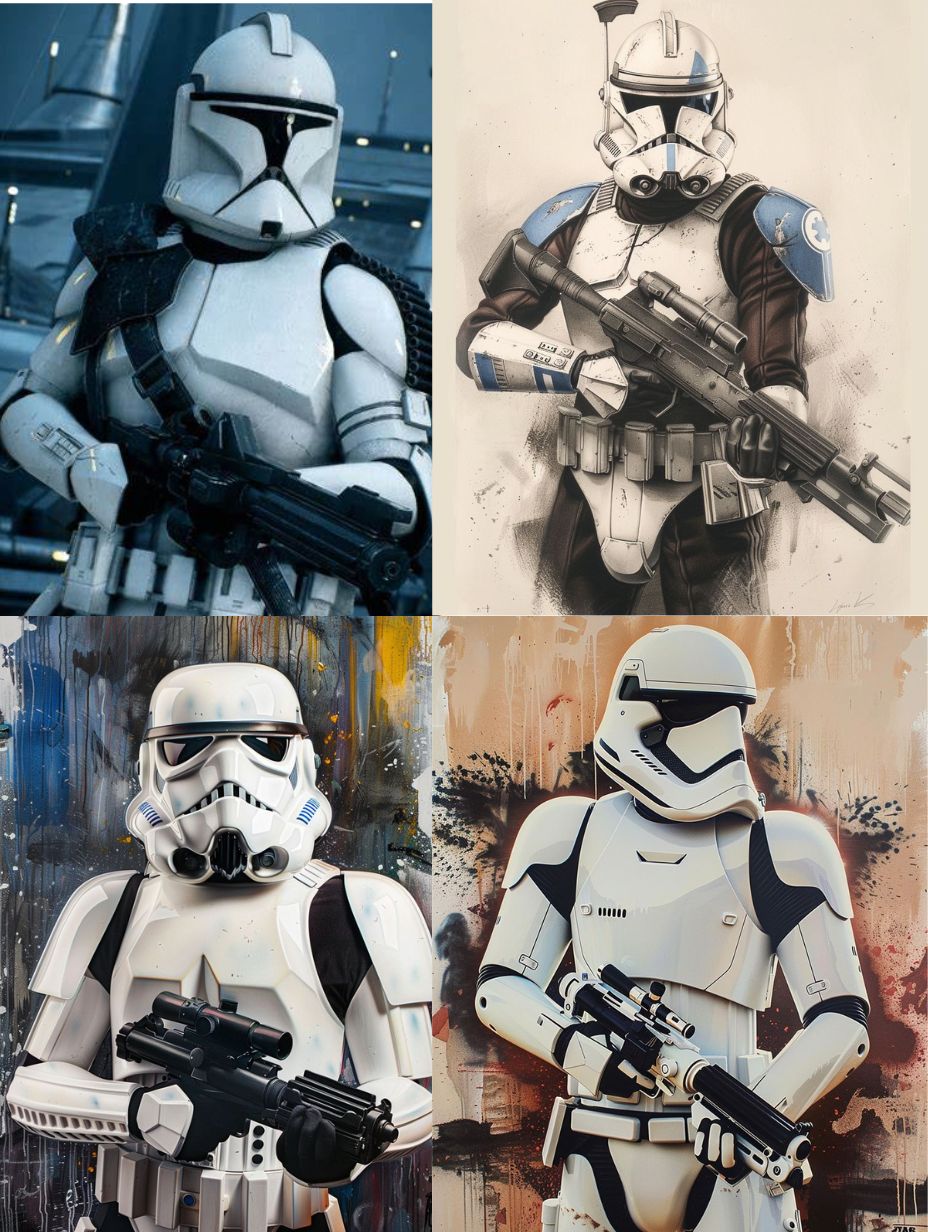
Each of the four designs – Phase 1 Armor, Phase 2 Armor, Stormtrooper, and First Order Stormtrooper – has its unique strengths and weaknesses. The “best” design can indeed vary depending on the specific mission, environment, and personal preference.
Phase 1 Armor is robust and offers comprehensive body protection, making it suitable for various combat situations. However, its lack of mobility and comfort can limit a trooper’s effectiveness in combat.
Phase 2 Armor, an upgrade to the Phase 1 design, provides enhanced protection, better field vision, and increased comfort. These improvements significantly enhance the trooper’s performance on the battlefield. However, it is still vulnerable to direct hits from blaster fire.
The Stormtrooper design is iconic and offers improved mobility and advanced communication systems. This can give Stormtroopers an edge in certain combat scenarios where speed and agility are crucial. However, its limitations in terms of visibility and protection can affect its effectiveness in combat.
The First Order Stormtrooper design provides superior protection and enhanced weapon systems. It represents a significant advancement over previous designs in terms of protection, weaponry, and overall performance. However, the issue of limited field vision remains a challenge.
Conclusion
In my personal opinion, the Phase 2 Clone Trooper design stands out as the best among the four.
While each design has its unique strengths and weaknesses, the Phase 2 Armor strikes a balance between protection, mobility, and comfort, making it a versatile choice for various combat situations.
One of the key advantages of the Phase 2 design is its adaptability.
The armor can be customized and adjusted for different environments and missions.
For instance, the color of the armor can be changed to match the environment, providing camouflage and giving the troopers a tactical advantage. This level of adaptability is not seen in the other designs.

